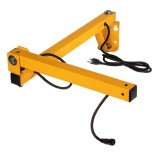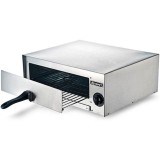Essential Aspects of Humanscale Monitor Arm Adjust Angle Adjustment
Proper monitor arm adjustment is crucial for maintaining optimal ergonomics and promoting good posture while working at a computer. Humanscale monitor arms are renowned for their ergonomic design and ease of adjustability. One key aspect of monitor arm adjustment is the ability to adjust the angle of the monitor. Here are some essential aspects to consider when adjusting the angle of your Humanscale monitor arm:
Importance of Monitor Angle Adjustment
Adjusting the angle of your monitor is essential for optimizing viewing comfort and reducing neck strain. The optimal monitor angle will vary depending on the individual's height, desk setup, and personal preferences. However, as a general rule, the top of the monitor should be at or slightly below eye level, and the screen should be tilted back slightly to prevent glare and eye strain.
Adjusting the Angle on Humanscale Monitor Arms
Humanscale monitor arms offer a range of adjustment options, including angle adjustment. Adjusting the angle is typically achieved using a lever or knob located on the arm. To adjust the angle, simply loosen the knob or lever, position the monitor at the desired angle, and then tighten the knob or lever to secure it.
Tilt Adjustment
Tilt adjustment allows you to change the vertical angle of the monitor. This is important for ensuring that the top of the monitor is at or slightly below eye level. To adjust the tilt, simply move the monitor up or down on the arm until the desired angle is achieved. Tilt adjustment can help reduce neck strain and improve overall viewing comfort.
Swivel Adjustment
Swivel adjustment allows you to change the horizontal angle of the monitor. This is useful for positioning the monitor directly in front of you or for sharing the screen with others. To adjust the swivel, simply rotate the monitor on the arm until the desired angle is achieved. Swivel adjustment can improve collaboration and make it easier to view the screen from different angles.
Height Adjustment
While not directly related to angle adjustment, height adjustment is another important aspect of monitor arm ergonomics. The height of the monitor should be adjusted so that the top of the screen is at or slightly below eye level. This can help reduce neck strain and promote proper posture. Humanscale monitor arms typically offer a wide range of height adjustment options to accommodate different desk setups and user preferences.
Benefits of Proper Angle Adjustment
Proper angle adjustment of your Humanscale monitor arm can provide numerous benefits, including:
- Reduced neck strain: Adjusting the monitor to the optimal angle helps reduce neck strain and discomfort.
- Improved viewing comfort: Proper angle adjustment ensures that the entire screen is visible without straining your eyes.
- Enhanced collaboration: Swivel adjustment allows for easy sharing of the screen with others.
- Increased productivity: Optimal monitor positioning can improve focus and productivity by reducing distractions and discomfort.
Conclusion
Adjusting the angle of your Humanscale monitor arm is an essential aspect of maintaining proper ergonomics and promoting good posture. By following the guidelines outlined above, you can optimize the viewing angle of your monitor to reduce neck strain, improve comfort, and enhance your overall work experience.

How To Balance Your Monitor Arm Human Solution

M8 1 Adjustable Dual Monitor Arm Humanscale

M2 1 Adjustable Lightweight Monitor Arm Humanscale

M2 1 Adjustable Lightweight Monitor Arm Humanscale

M8 1 Adjustable Dual Monitor Arm Humanscale

M2 1 Adjustable Lightweight Monitor Arm Humanscale

M8 Installation Instructions

Ergomood Humanscale M8 1 Monitor Arm Life Work

M8 1 Adjustable Dual Monitor Arm Humanscale

Humanscale M8 1 Dual Monitor Arm








